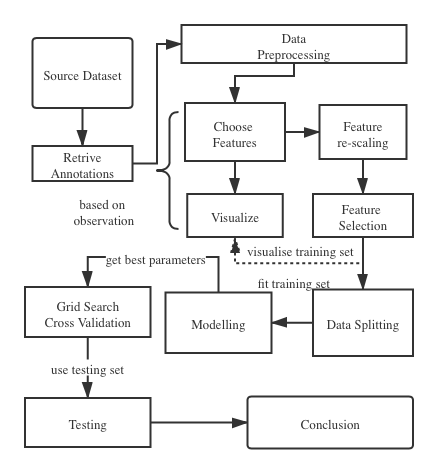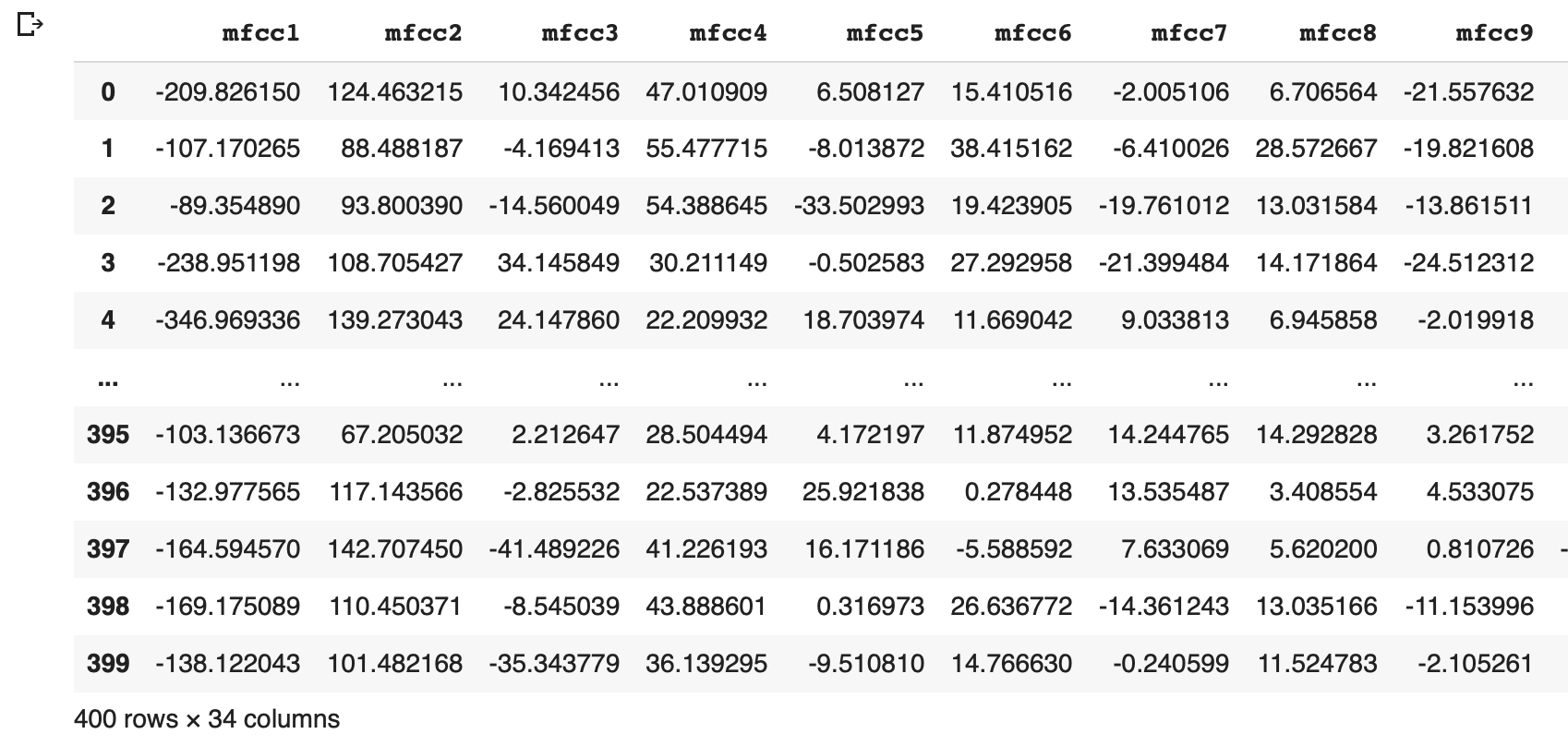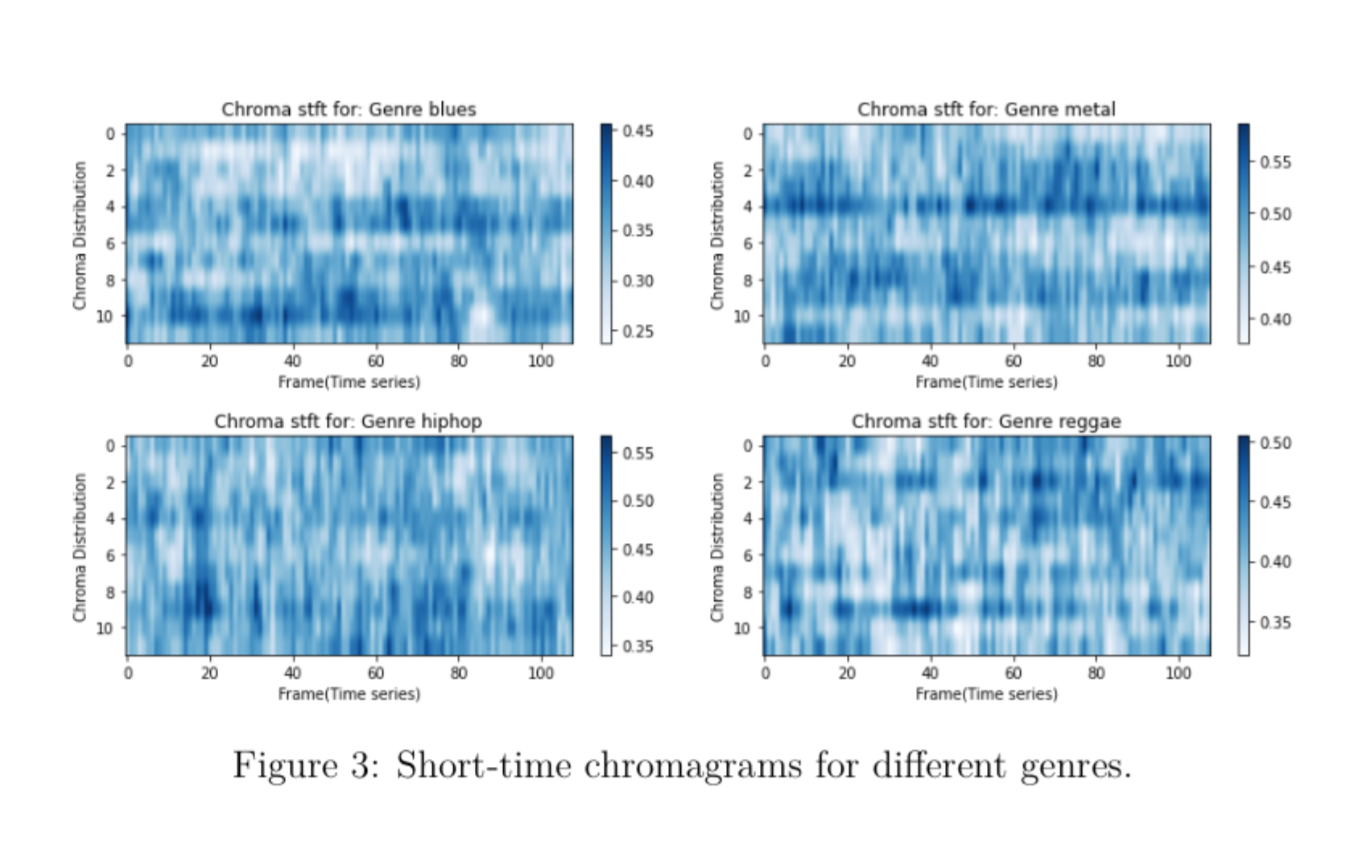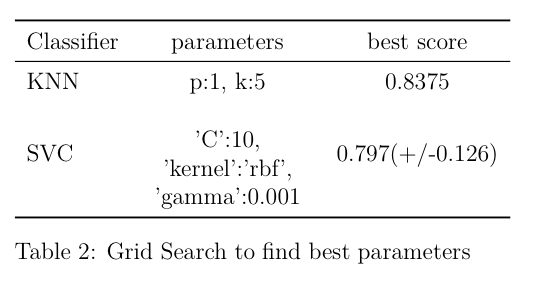Group5-CMLS-HW1
{ 10482867 10521088
10539533 10702368
10751919 } @mail.polimi.it

Project Workflow

Preprocessing
- retrieve annotations
- check original dataset
- split the dataset into training/test (80% vs. 20%)
Observe the Dataset
- have a look at the data
- check the quality

The Features
- 34 columns of feature
- 400 audio tracks
- 80 % for training
- 20 % for testing
- rescaling, selection, saving



Two Classifiers: KNN & SVC


- The process to use the classifiers: pick the right parameters --> build the classifiers -->fit with training data set
- We use K-fold (k = 10) Cross Validation and Grid Search method to optimise the parameters for those two classifiers
Results & Conclusions


-
Here are two confusion matrix to represent the final testing result, separately for KNN and SVC

- Each row in the matrix is the real genre, while each column is the predicted genre category classified by the model we build
Plot 4. KNN & SVC results of Confusion Matrix
Table 3: Final Results
Reference
-
[1]Data Sets. GTZAN Genre Collection.url:http : / / marsyas.info/downloads/datasets.html.
-
[2]LibROSA Documentation.url:https://librosa.github.io/librosa/.
-
[3]NumPy.url:https://numpy.org/.
-
[4]Pandas documentation.url:https://pandas.pydata.org/pandas-docs/stable/index.html.
-
[5]Scikit-learn.url:https://scikit-learn.org/stable/.
-
[6] Bob L. Sturm. “The GTZAN dataset: Itscontents, its faults, their effects on eval-uation, and its future use”. In:CoRRabs/1306.1461 (2013). arXiv:1306.1461.url:http://arxiv.org/abs/1306.1461.
-
[7] G. Tzanetakis and P. Cook. “Musicalgenre classification of audio signals”. In:IEEE Transactions on Speech and AudioProcessing10.5 (2002), pp. 293–302
-
[8] Final Detailed Report, Music Genre Classification, https://yilin10.github.io/MusicalGenreClassification/final.pdf
-
[9] Final Google Colab IPython Notebook, Music Genre Classification, https://github.com/yilin10/MusicalGenreClassification/blob/master/Assignment1.ipynb